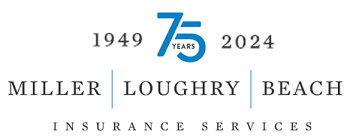Keep Your Business Going During a Disaster
Although you can’t foresee when fire, floods or storms may happen, you always know there’s a chance that “acts of God” could affect your business operations. Here are some tips on how you can plan for the unexpected and keep your business going during a disaster.
Planning for a disaster
Following a disaster, statistics show that 90 percent of companies fail within a year unless they can resume operations within five days. The most important step you can take to recover from a disaster is to have a plan in place.
Know in advance which staff members, materials, procedures and equipment are absolutely necessary to stay in business. Use a fire-safe box for financial documents and contact information that are essential for continuing operations. Tips for developing a business continuity plan are available at www.preparemybusiness.org.
Conduct an annual insurance review to make sure you have the coverage you need. Be sure to factor in any major purchases or facility upgrades you’ve made over the past year. In addition to insurance that covers specific natural disasters (e.g. flood insurance), business interruption insurance policies may make sense for your business.
A property insurance policy only covers the physical damage to the business, but a business interruption policy covers the loss of income that a business suffers after a disaster. Profits, fixed costs, the cost of a temporary location and extra expenses that allow the business to continue operation are typically covered under this type of insurance policy. Several years ago I had a client whose business was damaged by a hurricane. It took him months to get up and running because of the delay of getting permits and finding supplies to rebuild. Business interruption insurance is what kept his business afloat.
No matter how well you prepare, you can’t prevent a natural disaster from occurring. If your business is affected by a flood, tornado or other event, you have some financial options.
Insurance
Collect all of your policies and call your insurance advisor to make sure you don’t overlook any potential coverage. Don’t assume that if you don’t have a specific disaster policy that nothing will be covered in that event—there are other potential causes of damage or portions of your policy that may apply in certain situations.
Make a list of damaged or lost items and include their purchase date and value with receipts, if possible. Take photos of all the damaged property, including discarded objects and structural damage. If you must make some repairs to prevent the possibility of additional damage, document the remediation efforts and keep invoices.
SBA loans
In a disaster, credit-worthy borrowers may be eligible for a federally subsidized Small Business Administration (SBA) loan. Any business or private, nonprofit organization that is located in a declared disaster area and has incurred damage may apply for a loan to help replace damaged property or restore it to the condition it was in before the disaster. The SBA makes physical disaster loans of up to $2 million. More information about SBA loans is available here or by calling 800-659-2955.
Lynn Akers can be reached at (865) 766-3007 or lynn.akers@pnfp.com.
